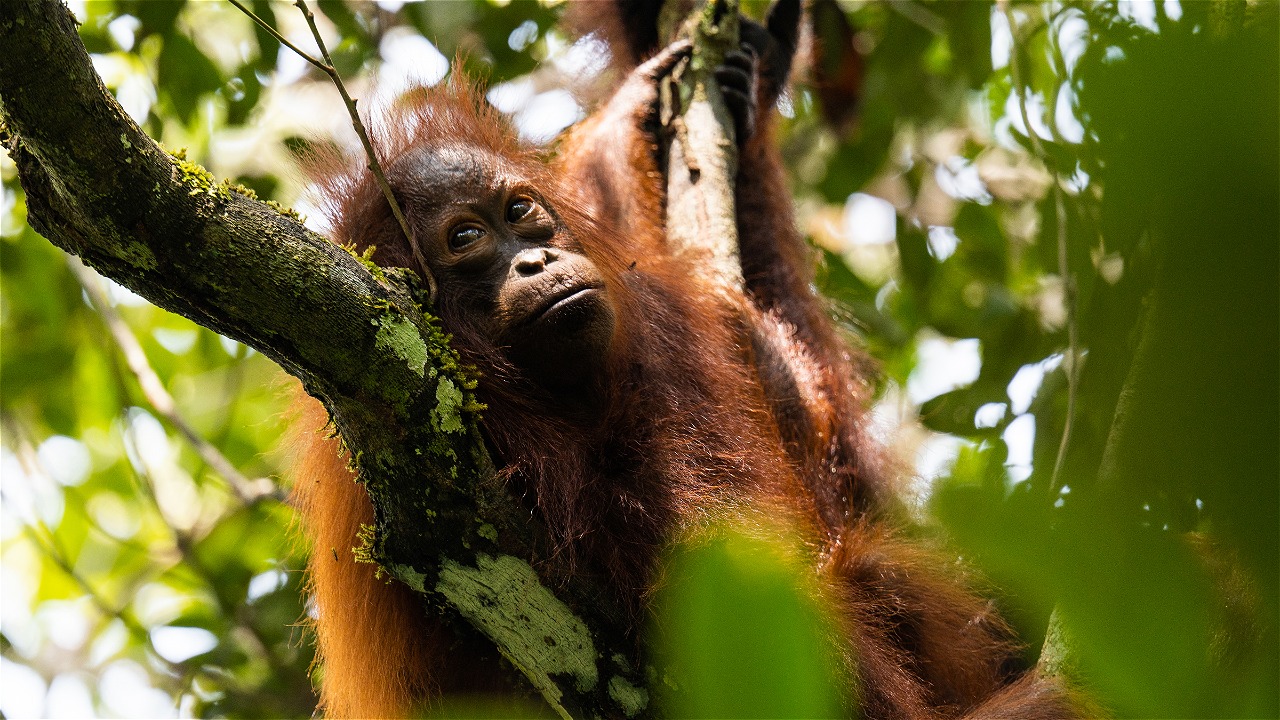ORANGUTAN TRAFFICKER SENTENCED TO 3 YEARS IN PRISON
By: Dwi Adhari N and Syamsidar.
The trial of three orangutans trafficking case in Pekanbaru District Court was held again with the agenda of reading the charges by the Public Prosecutor on Thursday, March 10, 2016. The hearing which started at 3:10 p.m. with a panel of judges chaired by H.A.S. Pudjoharsoyo and member judges Sorta Ria Nova and Raden Heru Kontodewo was silent. Public Prosecutor Ermindawati, SH read out the charges against the three perpetrators of rare and protected wildlife trade. The three perpetrators are Ali bin Ismail, Awaluddin alias Pakwe and Khairiroza bin Sofyan. This trial consists of two criminal files, the first is the case file of An. Ali bin Ismail and Awaluddin alias Pakwe and the second file An. Khairiroza bin Sofyan.
Public Prosecutor Ermindawati, SH in her indictment stated that the defendants Ali bin Ismail and Awaluddin alias Pakwe were guilty of violating Law. No. 5 of 1990 concerning Conservation and Biological Natural Resources and charged the defendants with 3 years imprisonment and a fine of 80 million in lieu of 6 months imprisonment. Then for the defendant Khairiroza bin Sofyan, the public prosecutor charged the defendant with a sentence of 2 years and 6 months and a fine of 80 million in lieu of 6 months imprisonment.
After the reading of the charges, Chief Judge H.A.S. Pudjoharsoyo immediately asked the three defendants, 'well, you have heard the charges given by the prosecutor, do you have a defense? Written or oral?'
The three defendants immediately responded. Starting from the defendant Khairiroza bin Sofyan who told the judge to ask for leniency and promised not to repeat his mistakes again. Ali bin Ismail and Awaluddin alias Pakwe also asked for leniency and promised not to make mistakes.
This trial will be continued on Wednesday, March 23, 2016 with the agenda of reading the decision by the Panel of Judges.
Previously, on November 7, 2015, three baby orangutans who were victims of trafficking by the three defendants were rescued by the Special Criminal Investigation Directorate (Ditreskrimsus) of the Regional Police. From that arrest, the police confiscated three baby Sumatran orangutans (Pongo Abelii) that the suspects brought from Tamiang-Acehr and were going to be traded in Pekanbaru at a price of Rp25 million per head.
When found, the condition of the three Orangutans was very poor. They looked weak, had diarrhea and looked very stressed. In coordination between Riau Police, BBKSDA Riau and WWF, the three baby orangutans, estimated to be 4-9 months old, were placed in a veterinary clinic in Pekanbaru City for temporary care. After eight days at the veterinary clinic, the three baby orangutans, whose condition began to improve, were relocated to the Orangutan-SOCP (Sumatran Orang Conservation Program) rehabilitation center in Batu Mbelin Village, Sibolangit District, Deli Serdang, North Sumatra. The decision to relocate the baby orangutans was made so that all three could receive better care.
The process of relocating the evidence of wildlife crime by road was escorted by officers from Riau Police, BBKSDA Riau and WWF. The three Orangutans then received intensive care at the rehabilitation center to be released later. However, two of them did not survive after a month in the quarantine center. The cause of death was likely stress. In fact, one of them was thought to have died due to a bullet that was still lodged in the nose adjacent to the eye as explained by drh. Yeni from SOCP was quoted on the Antara Riau website.
Orangutan poaching crimes are very concerning because to get orangutan offspring, the perpetrators usually kill the mother. So for one orangutan cub, the perpetrator has to kill one or more of its herd. If there are other orangutans that are considered to be a danger to the poacher, they will also be killed. With this condition, the Orangutan population is shrinking.
On the island of Sumatra, there are 13 pockets of Orangutan populations. Of these it is likely that only three population pockets have around 500 individuals and seven population pockets consist of over 250 individuals. Six of the seven populations are expected to lose 10-15% of their habitat due to deforestation, so these populations will decline rapidly.





